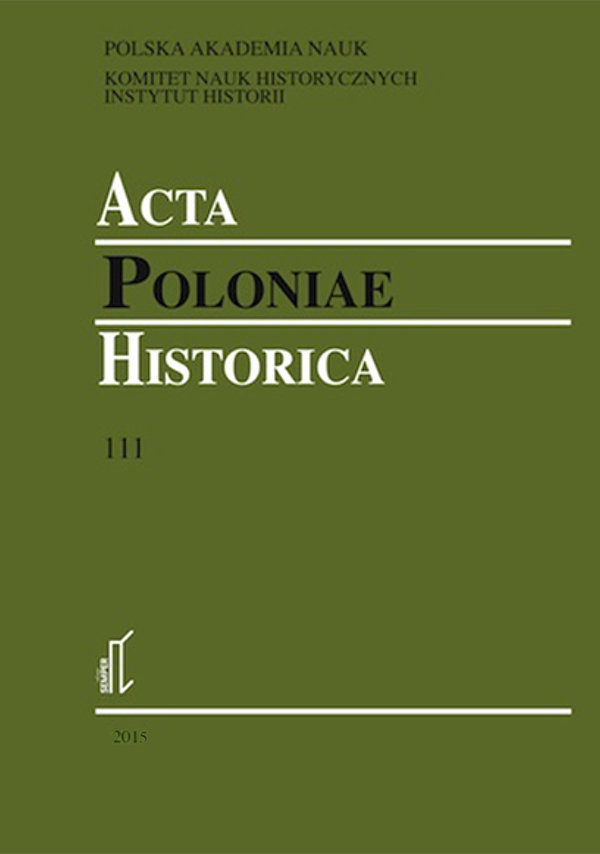A Capital in the Periphery. The Developmental Specificity of Budapest (as a Big East Central European City)
DOI :
https://doi.org/10.12775/APH.2015.111.06Mots-clés
Budapest, urbanization, representation, bourgeois culture, modernizationRésumé
A short essay can only flag the problem of creation of the image of Budapest as a capital city, and a symbol or epitome, of the Hungarian Kulturnation. I will focus on four matters: first, a few examples will be used to briefly exemplify the ideological programme of Historicist architecture. Second, the reception of this programme in the period’s journalistic writing will be shown (in brief, again), with particular emphasis on the craving for paralleling the West. Third, I will show how the Art Nouveau, rebelling against Historicism, essentially took over its historical mission. And, fourth, I will show the ways in which certain authors discerned already then the pretentiousness, or superficiality, of success. To end with, I will make a reference to the Sonderweg issues.Références
Davis Richard H., A Year from a Reporter’s Note-Book (New York, 1898).
Farbaky Péter, ‘A budai királyi palota a historizmus korában (Ybl Miklós és Hausz¬mann Alajos átépítési terveinek fejlődése és kapcsolata)’, in Tanulmányok Budapest Multjábol, xxix: A Budavári Királyi Palota Evszázadai (Budapest, 2001), 241–66.
Hauszmann Alajos, A Magyar királyi vár. Die ungarische Königsburg. Le Château Royal de Hongrie (Budapest [1912]).
Janos Andrew C., The Politics of Backwardness in Hungary 1825–1945 (Princeton, 1982).
Leonhardt Ernst R. and Melan Joseph, Oeffentliche Neubauten in Budapest. Aus Anlass der Studienreise im Jänner 1885 des Österreichischen Ingenieur-und Archi¬tekten-Vereines beschrieben (Budapest, 1885).
Loolok Lénárd, A Szent István királyról nevezett budapesti templom belsejének rövid ismertetése (Budapest, 1905).
Lyka Károly, ‘Szecessziós stílus – magyar stílus’, Müveszét, i, 3 (1902), 164–81.
Moyzer Miklós, Torony, kupola, kolonnád (Budapest, 1971).
Neÿ Béla, ‘Magyar épitészeti styl. Az egylet 1871 évi jan. 21-én tartott egyetemes szakülésén olvasta’, A Magyar Mérnök-és Epitész-Egylet Közlönye, v. 3 (1871), 97–113.
Sonne Wolfgang, Representing the State: Capital City Planning in the Early Twentieth Century (Munich and Berlin, 2003).
Szász Zoltán, Les causes du marasme de la littérature hongroise contemporaine, in La Hongrie contemporaine et le suffrage universel, Budapest 1909, 158–66.
Szekfű Gyula, A három nemzedék és ami utána következik (Budapest, 1989 [a reprint of 3rd edition: Budapest, 1934]).
Thold Orbán I., A budapesti Szent-István templom (vázlatos ismertetés) (Budapest, 1905).
Venturolli Marcello, La patria di marmo. Tutta la storia del Vittoriano, il monumento più discusso dell’età umbertina, tra arte, spettacoli, invenzioni, scandali e duelli (Rome, 1995).
Vigand Rudolf [Rezső], Wegweiser Budapests. Führer durch die Kgl. Ung. Haupt-und Residenzstadt (Budapest, 1910).
Téléchargements
Publiée
Comment citer
Numéro
Rubrique
Licence
Title, logo and layout of journal are reserved trademarks of APH.Stats
Number of views and downloads: 573
Number of citations: 1



